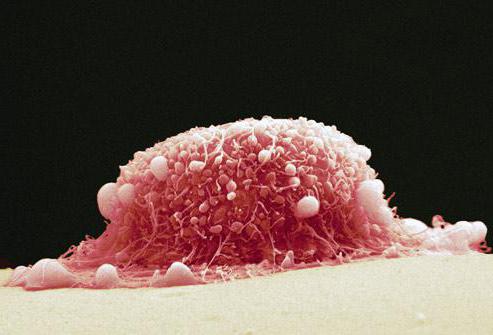As you know, tumors can appear in any organ. Among the female population, there is a wide spread of cervical cancer. This localization of malignant tumors takes the second place after breast tumors. In advanced cases, cancer cells pass from the cervix to the vagina. Primary tumors of this organ are rare. All neoplasms are divided into benign and malignant. In the first case, the cells that make up the tumor have an identical structure with the organ. That is, they are normal. Malignant neoplasms consist of "atypical" cells. Normally, they should not be found in the body, since their differentiation (division) is not completely completed. Tumors in the vagina can be either benign or malignant (cancer). Depending on the size of the formation and the structure of its cells, a treatment method is selected.

The prevalence of vaginal tumors
Primary malignant tumors in the vagina are rare. Often they metastasize from other organs. In most cases, cancer grows into the walls of the vagina in a descending way. That is, the cervix is the primary localization of the malignant process. Sometimes vulvar cancer (labia) grows in the vagina. Less commonly, a tumor metastasizes from a malignant neoplasm of another (distant) organ. Primary vaginal cancer is only 1-2% among oncological pathologies of the female reproductive system. It can occur in any age period. The peak incidence occurs in 50-60 years. Tumors in the vagina develop earlier if the woman has a large number of births in her medical history. The most common squamous histological variant of cancer. This neoplasm develops from undifferentiated epithelial tissue.
Benign vaginal tumors are more common than cancer. They develop from connective, adipose and muscle tissue. Unlike cancerous tumors, benign formations more often occur at fertile age. Often, they are diagnosed in women aged 20-50. Despite the fact that they are not prone to spread, treatment of these formations is necessary.

Causes of a tumor in the vagina
Why can there be a swelling inside the vagina? Despite the rapid development of oncology, the causes of cancer are still unknown. It is believed that each histological variant of the neoplasm can have a different origin. For example, the development of clear cell adenocarcinoma is associated with the adverse effects of diethylstilbestrol (DES). This substance refers to synthetic female sex hormones created in the first half of the 20th century. Previously, DES was prescribed for women with various disorders of the menstrual cycle, as a contraceptive, as well as to prevent miscarriages. However, it later became clear that this drug has a teratogenic effect on the fetus. In women who were exposed to DES during prenatal development, the risk of developing vaginal cancer is significantly increased. This provoking factor leads to the appearance of clear cell adenocarcinoma at a young age (19-24 years).

In addition, the following reasons for the development of primary vaginal cancer are distinguished:
- Human papillomavirus. There are many varieties of this pathogen. Some of them are found in tumor cells.
- Vaginal adenosis. This pathology is characterized by the replacement of squamous epithelium with glandular cells. In some cases, such a transformation is noted after the onset of menstruation in healthy women.
- Chronic inflammation of the vagina. Often associated with the use of uterine rings. It can also develop with advanced infectious processes of bacterial and viral etiology (vaginitis).
- Smoking.
- Earlier onset of sexual activity and frequent change of partners.
- The effect of radiation on the body.
What benign masses can develop in the vagina?
A benign vaginal tumor is not an oncological disease. It develops from normal body cells. Most often, benign genital tumors are diagnosed in women with a hormonal disorder. The following types of formations are distinguished:
- Vaginal lipoma. This benign tumor comes from adipose tissue. It is less common than other neoplasms.
- Vaginal fibroma. It arises as a result of proliferation of connective tissue.
- Vaginal fibroids. It develops due to the growth of smooth muscle elements.
- Fibromyoma. This formation combines smooth muscle cells and connective tissue. It is more common than other existing vaginal tumors.
- Hemangioma. Occurs on the mucous membrane of an organ. It may consist of capillaries or veins.
In addition, papillomas and cysts are referred to benign tumors developing in the vagina. The first - arise due to proliferation of the papillary layer of the epithelium. They are found in women infected with HPV. Vaginal cysts develop from glandular tissue. These formations are cavities filled with liquid.

Malignant formations: varieties
There are several classifications of vaginal cancer. Malignant tumors of the vagina differ in histological structure, growth form, stage. Depending on the type of cancer, the prognosis and treatment tactics are determined. According to histology, malignant tumors in the vagina are divided into the following options:
- Squamous cell formation. This type of cancer occurs in 95% of cases. Often, it develops gradually against the background of pre-tumor processes. Most often, cancer is localized at the junction of the vagina into the cervix.
- Melanoma. This formation refers to pigmented tumors. It is characterized by pronounced aggressiveness, rapid development and a tendency to metastasis. Often, melanoma grows into the vagina from the vulva. Less commonly, it is a primary tumor.
- Clear cell adenocarcinoma. It occurs in young women. Refers to DES-dependent tumors.
- Secondary adenocarcinomas. These neoplasms are metastases of tumors from other organs.
- Sarcoma. Often, this is a swelling of the vaginal wall. It can develop from smooth or striated muscles (found in young children).
- Germ cell tumor of the vagina. This histological variant of cancer is characterized by the fact that atypical cells are formed in the germinal period from the gonads. It can be found at any age, more often in children.
Endo- and exophytic neoplasms are distinguished depending on the nature of growth. The first - develop in the wall of the organ. Exophytic cancer grows outward, that is, into the vaginal cavity. It is believed that this option is less likely to spread by the hematogenous route (metastasizes).

Vaginal tumor: symptoms of pathology
Vaginal cancer may not appear for a long time. Symptoms such as pain in the lower abdomen, the occurrence of bloody discharge during intercourse, and white are sometimes noted. When the tumor reaches a large size, a feeling of a foreign body in the vagina, violation of urination, defecation may appear. Similar symptoms are noted with both benign and malignant formations. In addition to trauma and bleeding, inflammation of the tumor node can develop. In this case, the main symptom is pain, hyperemia of the mucous membrane, possibly purulent discharge (ulceration, necrosis).

Vaginal cancer stages
The initial stage is a precancer. That is, the degeneration of cells already exists, but they have not yet penetrated into the thickness of the tissue. The first stage is characterized in that the size of the tumor does not exceed 2 cm in diameter. Cancer does not grow into the deep layers of the vaginal wall and does not spread to the lymph nodes. In the second stage, the size of the tumor is more than 2 cm. In this case, the deep layers are not infiltrated, there are no regional metastases. If in addition to the tumor node there is paravaginal infiltrate, then this is the third stage of vaginal cancer. Lymph nodes, pelvic walls may be affected. In the fourth stage, the tumor grows into nearby organs or there are distant metastases.
Diagnosis of vaginal cancer
With exophytic formations, on the basis of a gynecological examination, an initial diagnosis of a vaginal tumor can be made. Photos of this type of cancer can be seen in the literature. Externally, exophytic tumors resemble cauliflower. It is possible to establish the cellular composition of the formation only after a biopsy with further histological and cytological examination. Thus, the origin of the tumor is determined. Only after a histological conclusion can a doctor say for sure whether the patient has cancer or not.

Methods of treating benign tumors
If there is a benign tumor near the vagina and on its walls, the treatment tactic depends on the size of the formation. Often in the first 3 months the doctor only observes the patient. With an increase in the size of the tumor or the appearance of any symptoms, treatment is performed. Most often, papillomas and vascular formations undergo cryodestruction, electrocoagulation, and laser removal. If the tumor has a broad base, it is excised surgically.
Vaginal cancer treatment
With malignant tumors of the vagina, stages 1-2 carry out radical surgical treatment (removal of the vagina, sometimes with the uterus and appendages). In addition, chemo-, photodynamic and radiation therapy are used. When the oncological process is launched, palliative operations are performed. If there are distant metastases, only symptomatic treatment is prescribed.
Prevention of the appearance of tumors in the vagina
To avoid the onset and development of tumors in the vagina, you must periodically visit a gynecologist (at least 1 time per year). Also, you should not start hormone treatment on your own, since only a doctor should prescribe drugs. If any signs of pathology appear, it is worth going through a gynecological examination. If there is a risk of developing cancer, you should stop smoking, establish nutrition.
Prognosis for tumors in the vagina
The prognosis depends on the origin of the tumor, as well as on the general condition of the woman. In the presence of benign neoplasms, it is worthwhile to constantly be observed by a gynecologist. If necessary, remove the tumor. The prognosis for vaginal cancer depends on the stage of the cancer process. On average, five-year survival is 50-60% in patients undergoing radical treatment and radiation therapy.